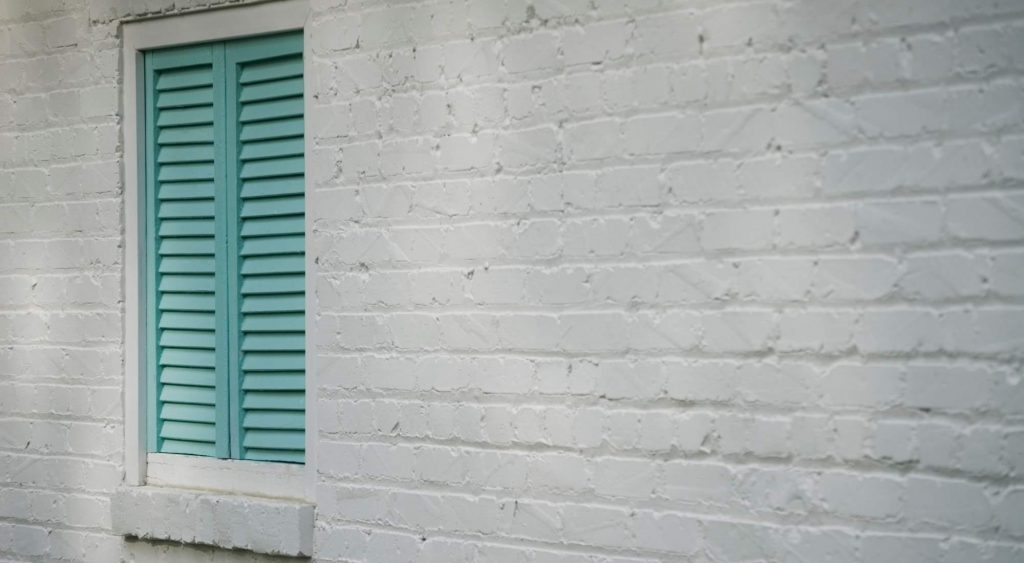We’ve all heard of the dangers of lead and lead paint. From the panicking parents of the ’70s and ’80s to an increasingly concerned general public through the years, lead paint is a well-known threat.
But what should you do if you discover that your home has lead paint? Do you need to remove it? How?
This guide will help you understand everything you need to know about removing lead paint.
Keep reading to learn:
- What methods of lead paint removal are permissible
- Which ones to avoid; and
- Whether or not you should attempt a DIY solution
Table of Contents
- Is Removing Lead Paint on the Exterior of My Home Necessary?
- Can I Remove Lead Paint Myself?
- 3 Common Exterior Lead Paint Removal Methods
- How Much Does Exterior Lead Paint Removal Cost?
- Do’s and Don’ts of Exterior Lead Paint Removal
- Instead of Risking Your Safety and the Integrity of Your Home, Hire the Experts at A1 Paint Removal, Painting & Restoration For Your Exterior Lead Paint Removal Job
Is Removing Lead Paint on the Exterior of My Home Necessary?
Is lead paint dangerous enough to have to remove?
In short, yes. Removing lead paint is worth the hassle.
Lead-based paint is highly toxic and can lead to many serious health conditions and other concerns such as:
- Brain damage
- Kidney damage
- Nerve damage
- Blood issues
- Learning disabilities
- Seizures
- Behavioral issues
- Death
Even if you never contract one of these issues, you may find yourself battling lead poisoning, which is often accompanied by flu-like symptoms in adults.
Children suffering from lead poisoning often do not exhibit any symptoms.
Lead is a serious health hazard, especially for children who do not understand the threat and unknowingly expose themselves frequently when lead is present.
Keeping lead paint around is just not worth the risks.
Can I Remove Lead Paint Myself?
Removing lead paint without the help of a certified professional is possible, however, it is not your wisest option. There are many hazards associated with removing lead paint, and without the proper supplies and training, you can easily harm yourself and others.
Due to the dangerous nature of the job, some states do not allow DIY lead paint removal. Should you choose to remove your lead paint on your own, be sure to check your state-specific guidelines to make sure you follow all required protocols.
A1 Paint Removal, Painting & Restoration is here to help with your paint removal needs. We’ve been perfecting our technique since 1995, and our prep and cleanup routines are designed to never leave a trace behind.
3 Common Exterior Lead Paint Removal Methods
You are probably wondering how to remove exterior lead paint.
Removing lead paint can be a difficult task, and there are multiple different ways to do it, each method having its own difficulties.
#1: Encapsulation
Encapsulation is a method of preventing lead from leaching into the environment.
If you go this route, you will be covering the old lead paint with an encapsulant in the form of a liquid or an adhesive. This prevents the lead paint from deteriorating into dust or peeling off.
It is even possible to use special paint as an encapsulant and just paint over lead paint.
Sounds simple enough, right?
Not necessarily.
There are a lot of potential issues you may run into with encapsulants. For instance:
- Water tends to damage encapsulants — If you have roof damage or a pipe breaks, you can count on having to deal with that lead paint all over again.
- Encapsulants have to be applied under very specific weather conditions.
- Prepping the surface can take a lot of time and effort. If you do not do it correctly, your encapsulants can peel, meaning you have to start over.
- You have to test the encapsulant on site before proceeding.
- They can only be used in specific places on your walls that do not experience grating or friction.
Encapsulation can be a good method for dealing with a peeling lead paint exterior, but the DIY encapsulation route is often incredibly difficult and complicated.
#2: Traditional Removal Methods
When looking to remove paint, there are some tried and true methods that, although often tedious, tend to get the job done.
The problem is that having lead-based paint complicates things. You often cannot use the traditional methods without a good bit of modification.
Sanding is a great example …
If you are looking to remove lead paint by sanding, you will need to familiarize yourself with the process of wet sanding.
Dry sanding creates a fine dust that is easily inhaled and can cause major health complications.
You must use the wet sanding method if you are removing lead paint. The great thing about wet sanding is that it creates more of a sludge that can simply be wiped away, instead of dust that can easily be inhaled.
Wet sanding also requires an electric sander fully equipped with a high-efficiency particulate air (HEPA) filtered vacuum.
You can also use methods such as wire brushing and wet hand scraping, but these have special regulations as well. You should look into them before jumping into the project.
#3: Enclosure
Enclosure is like a bandaid for lead paint.
You remove any damaged paint and then literally cover over the lead paint. This method is more commonly used on interiors, but it can sometimes be used on exteriors as well.
It is important to note that enclosure means more than just putting some siding over the lead paint. You have to make sure that the material you use to cover it is approved, and you must ensure that you seal the cover tightly.
Keep in mind, enclosure does not take away the lead paint, it just covers it. So if you decide to do a deep remodel, you are going to have to find another way to deal with the lead paint.
How Much Does Exterior Lead Paint Removal Cost?
There is no other way to say it — lead paint removal can be incredibly expensive.
Many folks spend around $10,000 on the removal process, and this is still on the low end.
When people see numbers that big, they often wonder, how about DIY removal?
Although it might seem like a better option, DIY lead paint removal is often just as expensive, long-term. Purchasing the right tools, materials, and protective gear can cost quite a bit, not to mention the time lost in DIYing the removal.
While DIY lead paint removal can seem like a good idea at the start, many homeowners end up having to invest even more in the project as later complications arise.
Putting in the money to have a professional do the job ensures that it gets done the right way.
Here at A-1 Paint Removal, Painting & Restoration, we are a team of trained professionals and we do the job right. From start to finish, we know how to make your lead paint problem disappear, leaving you with a safer version of the home you love.

Do’s and Don’ts of Exterior Lead Paint Removal
Whether you attempt a DIY solution or choose to bring in a professional, there are some specific things you should — and should not — do when it comes to removing your exterior lead paint.
While a professional paint remover will already know these do’s and don’ts, if you are doing the project on your own, you should familiarize yourself with these safety measures.
Don’t Use Any Forbidden Methods of Lead Paint Removal or Cleanup
Should you choose the DIY route, you need to know that there are multiple forbidden methods for removing lead paint. Failing to choose an approved method can result in contamination issues and even fines, depending on where you live.
Some of these forbidden methods include:
- Flame burning/torching
- Sandblasting without HEPA local exhaust control
- Sanding/grinding without HEPA local exhaust control
- Dry sanding/dry scraping
Make sure you do the research and ensure that your method is safe and legal before you start removing your exterior lead paint.
Cleanup is a vital part of the process, and it is important to do it correctly.
You will need to vacuum up the remaining paint chips with a HEPA filtered vacuum, wipe everything a couple of times with a wet rag, and then rinse it all clean. Depending on your project, there may be slightly different — or additional — steps you need to follow.
Do Ensure There Is a “Lead-Safe” Entryway Into the Building
Before beginning, ensure that you have one entry into your home that will not be contaminated during the removal process.
For example, if you have a front and back door but no other entry, do not remove lead paint from the front and back at the same time. You need one entry into your home that is not affected by your lead paint removal at all times.
If you do not have an uncontaminated doorway, you risk your health and the health of anyone within your home.
Don’t Eat or Drink Near the Workspace
To help reduce lead exposure, you should only be near the workspace if you are working. Don’t take breaks close to the contaminated work area if you plan on removing your protective gear.
There are many different ways someone can contract lead poisoning, and ingesting lead is one of them.
When you break for food or drink, be sure to move far enough away from the workspace that you are not risking ingesting lead along with your hoagie and coke.
When you are removing lead paint, the process can create tiny dust-like particles of lead that can easily be inhaled or ingested if you are eating or drinking around them.
Be safe and take your breaks away from the contaminated workspace.
Do Wear Personal Protective Equipment
One massive mistake people often make when removing exterior lead paint is not wearing the correct PPE. It is vital to protect yourself when dealing with lead.
You should always wear lead-grade personal protective equipment including:
- Lead-rated respirator mask (a regular mask won’t cut it)
- Goggles
- Rubber gloves
- Clothing you can dispose of when you are through
Instead of Risking Your Safety and the Integrity of Your Home, Hire the Experts at A1 Paint Removal, Painting & Restoration For Your Exterior Lead Paint Removal Job
Lead paint is an incredibly toxic hazard.
Instead of risking your health and that of your family, contact A1 Paint Removal, Painting & Restoration for your free paint removal estimate. We are a certified, professional paint removal service, and we know how to make sure your project is done professionally, safely, and correctly.
With over 25 years of experience, our team is ready to make your lead paint problem disappear.





